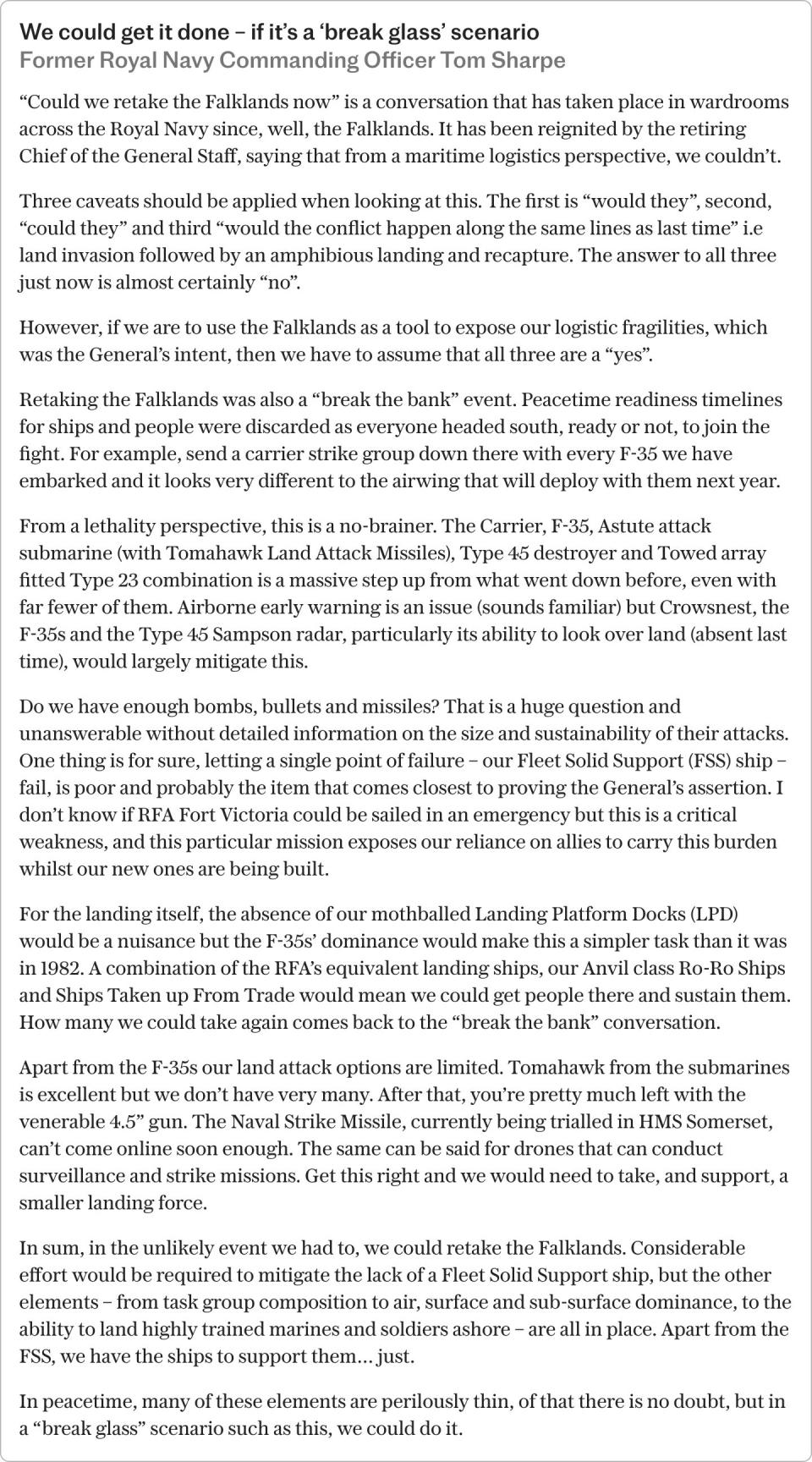Would Britain win the Falklands War now?
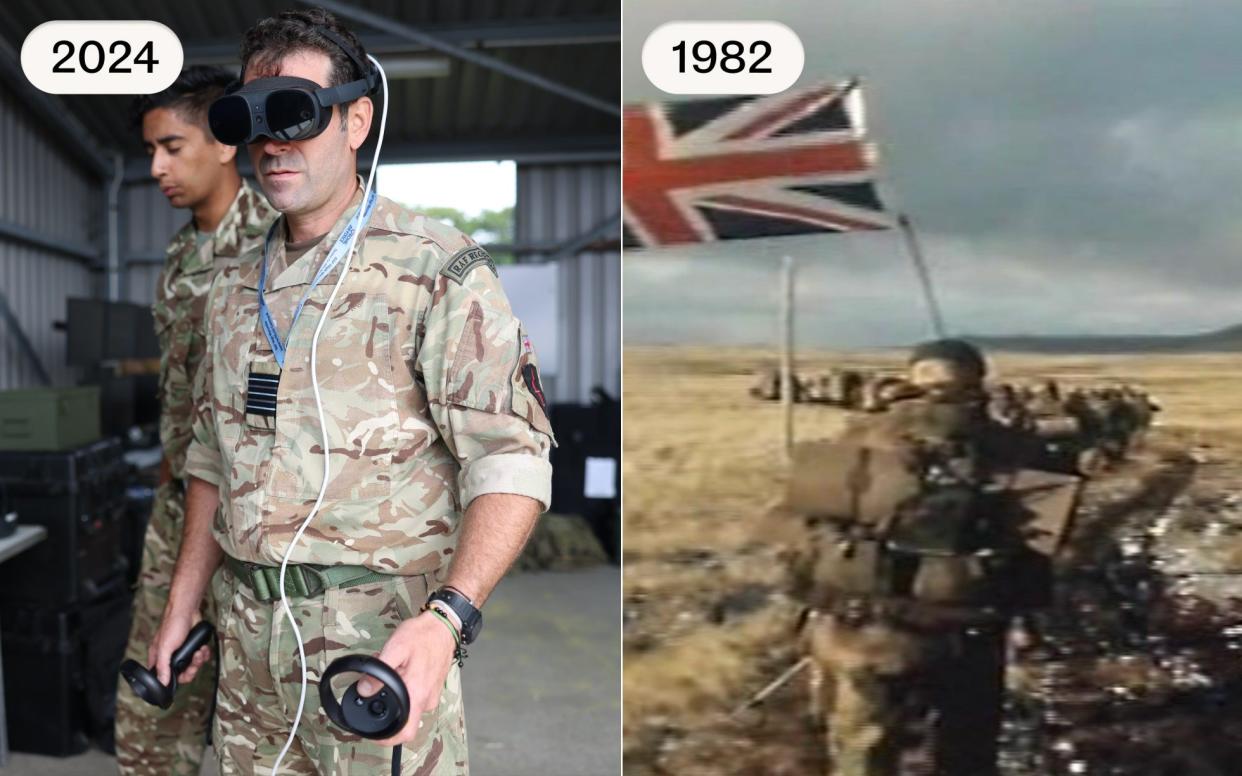
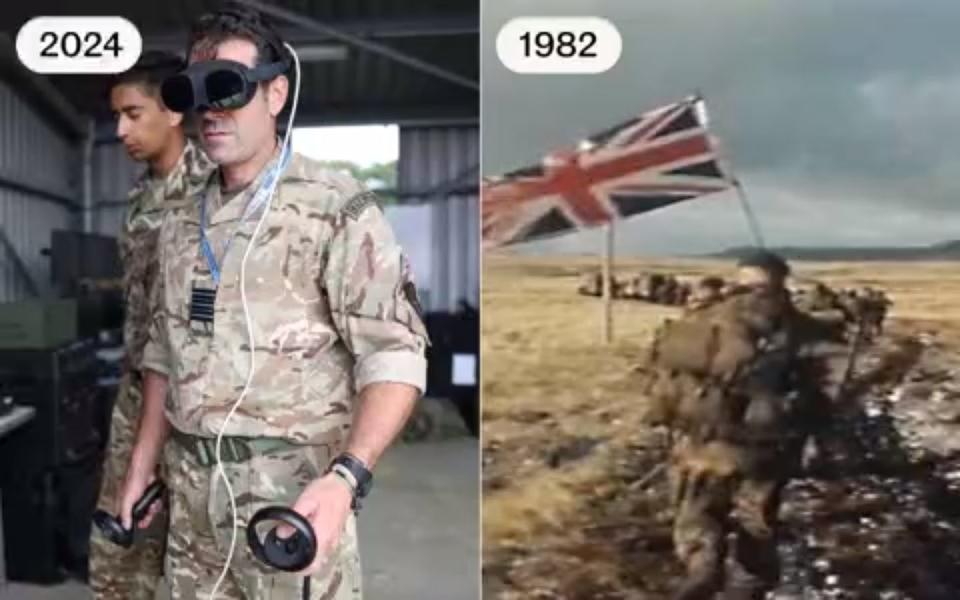
Like any good soldier, General Sir Patrick Sanders, the recently departed head of the Army, kept one bullet in reserve as he fired through the last magazine on his way out the door of the MoD.
During his tenure as Chief of the General Staff, the puckish 58-year-old had long let it be known he thought the Armed Forces had suffered too big a bite when “peace dividend” savings at the end of the Cold War were viewed with hungry eyes by successive governments’ Treasury departments.
His regular, albeit nuanced, criticism in this regard is thought to have been the main reason his tenure as Army chief was not extended.
It should have come as no surprise then, that the theme of defence cuts featured strongly in his final interview – something the new Labour government say will be addressed in a strategic defence review set to report by next summer. (Keir Starmer has said defence spending will rise to 2.5 per cent of GDP but has yet to set out a timetable for this.)
Perhaps most notably, Sir Patrick was unequivocal when it came to one of the hardy conversational perennials in military circles: could Britain win the Falklands War if it were fought today?
“Could you scramble together the two brigades that took the Falklands? Yes, of course we could. But could we get them there? Could we have the task force that made it possible and sustain it? No.”
But is he right?
How was the 1982 campaign prosecuted?
After Argentina invaded the British overseas territories of South Georgia and the Falkland Islands in April 1982, the government of Margaret Thatcher deployed a naval task force to the South Atlantic, including anti-submarine frigates, air-defence destroyers and aircraft carriers from which the all important Sea Harriers and helicopters deployed.
A 200-nautical-mile Total Exclusion Zone was declared around the islands, in which the British said any Argentine vessel would be liable to attack. The sinking of the cruiser General Belgrano on May 2 led to the entire Argentine naval force, less one submarine, returning to port.
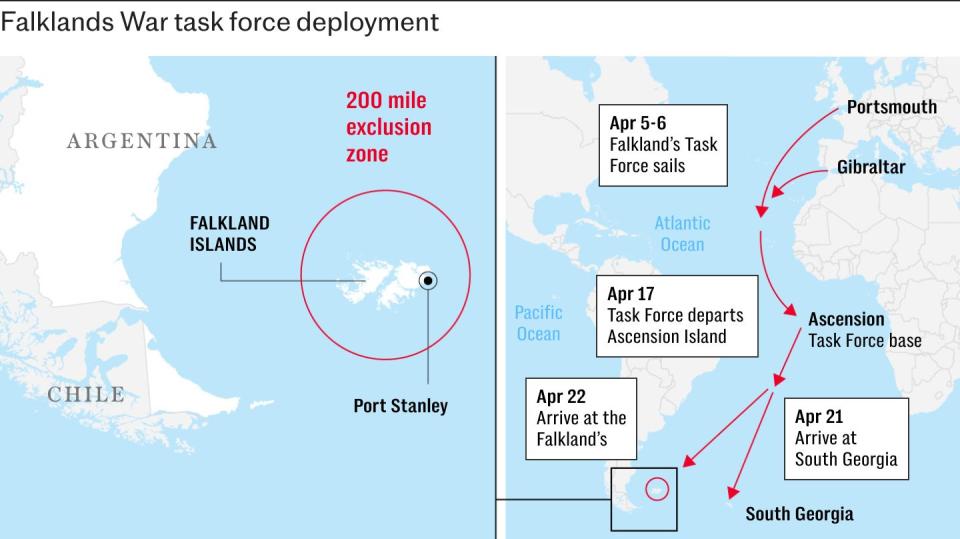
This decision then allowed British forces (principally Royal Navy submarines) to get close enough to the Argentine coast such that they were able to provide early warning of enemy air activity that might threaten the British fleet and any attempt to land troops on the islands.
The ensuing amphibious landing on East Falkland was largely unmolested and the Argentine air force, despite a few successes against British ships, was never able to establish dominance in the sky.
There then followed 21 days of hard fighting – much of it at very close quarters – across cold, boggy and mountainous terrain before the Argentinian force surrendered on June 14.
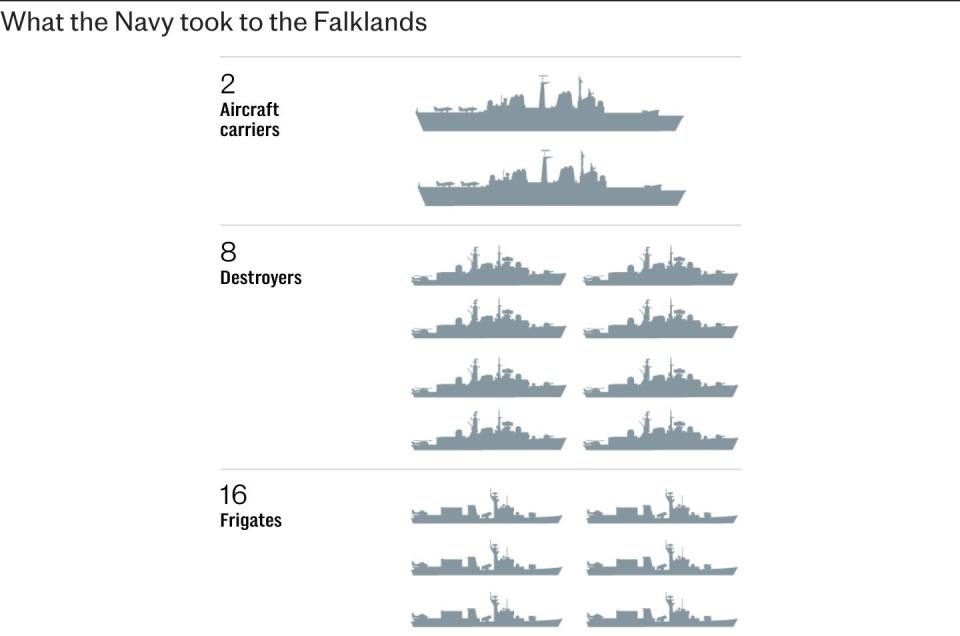
One of the hardest parts of the British campaign was the deployment and sustainment of the fighting force necessary to retake the islands more than 8,000 miles from home. Luckily, Argentina had no way of threatening the task force as it sailed south until it got very close to the Falklands, and even then finding and attacking the fleet was a tall order.
A successful deception campaign and an inability by Argentina to monitor British troop movements, for example by satellites, helped secure the landings and the battles that followed. Once facing each other, the Argentine troops, many of whom were conscripts, were no match for the British forces.
Hasn’t our army shrunk since then?
The Army of 2024 looks very different from that of 1982, most obviously in size. Encompassing just over 75,000 regular forces, today’s Army – in personnel numbers at least – is a fraction of the 163,000-strong headcount from which the task force was drawn.

In 1982, knowing the fight in the middle of a Falkland Islands winter would be as bitter as it was exhausting, Army chiefs in London decided to mobilise as the core of the fighting force the nation’s toughest troops: the Parachute Regiment, Royal Marines and the feared Gurkhas.
Although the Army as a whole may have shrunk in the decades since, those units are largely intact. And if troops in those units are still available, with the same ethos, training standards and razor-sharp fighting spirit as their forebears, the loss of other parts of the “big green machine” would not necessarily be terminal for a small military operation.
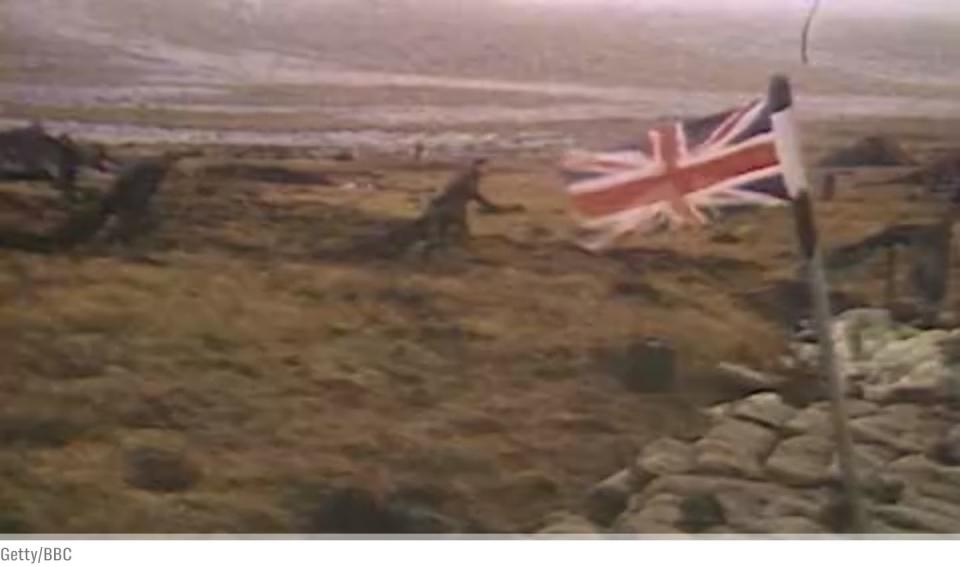
But of course, wars today, while recognisable to soldiers of yesteryear, differ in many ways – especially when it comes to military technology. The ships, tanks and planes of today are the same as their 1982 counterparts in terms of their purpose, but are light years ahead in technical capabilities.
And while military chiefs may have shrunk the Army, they would likely counter that developments in other areas, such as offensive cyber capabilities, drones and space-based systems, have more than made up for the cuts.
Prior to his time as head of the Army, Sir Patrick was in charge of Strategic Command. This military organisation runs many of the specialist and niche capabilities that don’t look like a tank, plane or ship. Think: satellites, special forces and military cyber hackers.
Consequently, having seen both sides, Sir Patrick has always steered a middle way in the “cyber or bayonet” debate.
He has championed cyber capabilities while also cautioning, “you can’t cyber your way across a river”, and even more directly: “Don’t get caught out bringing a computer to a knife fight.”
Even so, Britain’s cyber capabilities today are formidable and shouldn’t be underestimated in any future war.
Well in advance of any future invasion of the Falkland Islands GCHQ and military colleagues would be active in the cyber domain: looking for indicators and warnings of potential hostile action; denying enemy capability; and good old-fashioned spying.
If enemy troops were landed on the Falkland Islands, and well ahead of any task force arriving, a GCHQ cyber strike would likely turn off all the power in the aggressor state’s capital. After two days of total chaos, London would likely send the message, “Have you had enough?”
Adding to the complications for any would-be hostile power is the fact that after the 1982 war the MoD developed bases on the islands.
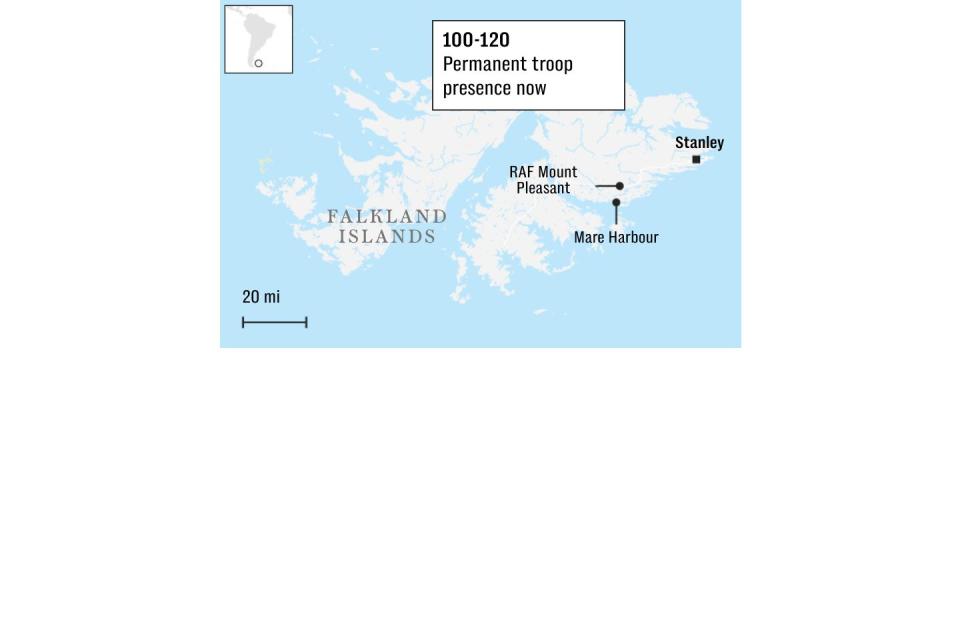
Mount Pleasant airfield is now home to four Typhoon fighter jets and an infantry company group of around 120 soldiers. They would see any potential invasion force coming from afar and have the means to do something about it.
So, no guarantee the islands could be invaded again and, if even they were, British victory is assured?
Not exactly. Note Sir Patrick’s words: the biggest problem would be getting to the fight.
Even the task force in 1982 had to rely on civilian cruise liners transitioning into troop carriers. On May 12 of that year, RMS Queen Elizabeth 2, a cruise liner which had been requisitioned, left Southampton loaded with soldiers from 5th Infantry Brigade. Many more such vessels would be needed today.
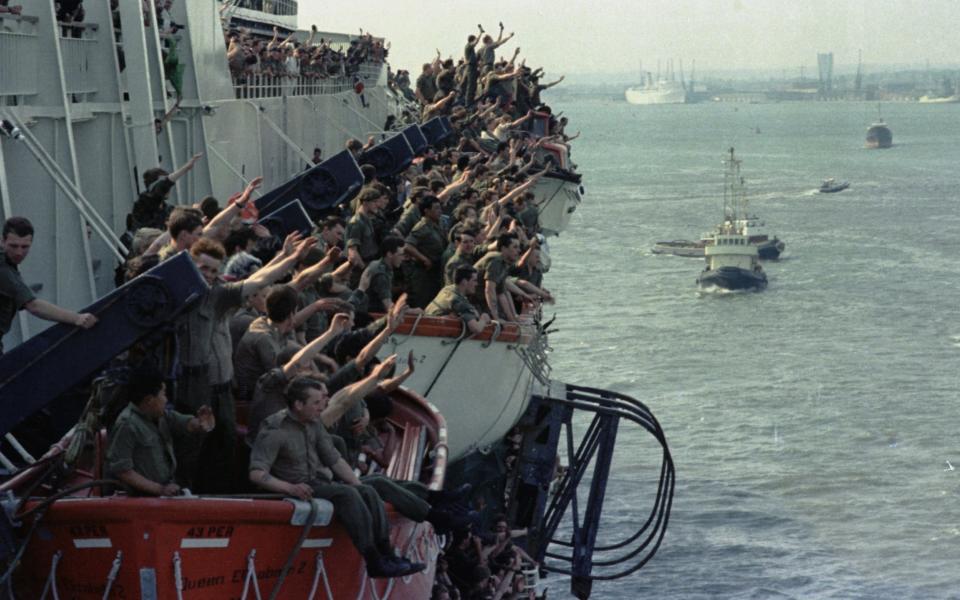
In a Nato exercise some years ago a Polish commander stepped up to the planning board, after a series of British, French, US and German officers had explained, with arms sweeping across a map of Europe, how a fictional eastern enemy would be repulsed.
“You guys have forgotten,” the Polish officer said with a smile, “what it takes to move an army.”
The point was reinforced by Sir Patrick, who emphasised how our military capability to project forces over thousands of miles has been allowed to wither by the MoD since 1982.
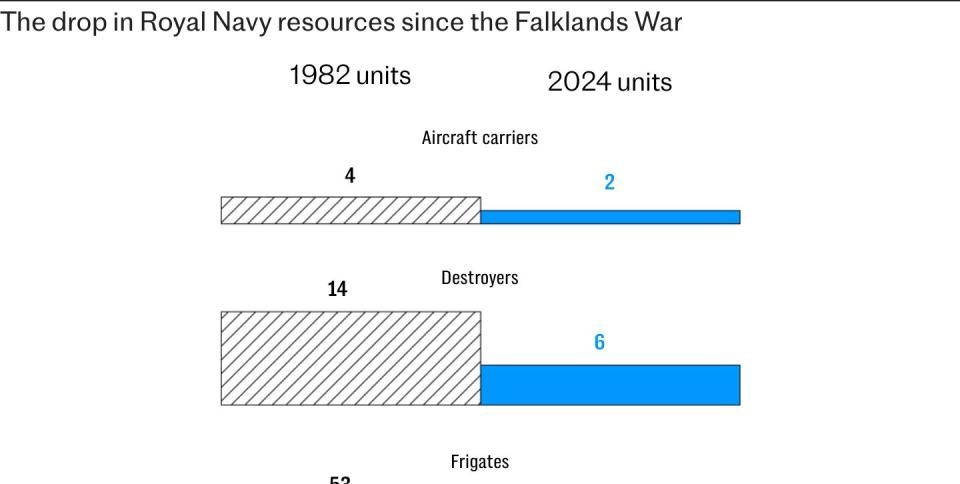
It took months to build up the forces necessary for the campaigns in Iraq and Afghanistan. Sustaining them thousands of miles from home and other friendly bases was an immense logistical headache. And that effort went over friendly seas and compliant allies.
Sir Patrick was suggesting the requirement to project and sustain forces over vast distances, especially where enemy submarines and anti-ship missile-launching aircraft may be lurking in the sea, and fighter jets firing engaging targets Beyond-Visual-Range in the air, is beyond the MoD right now.
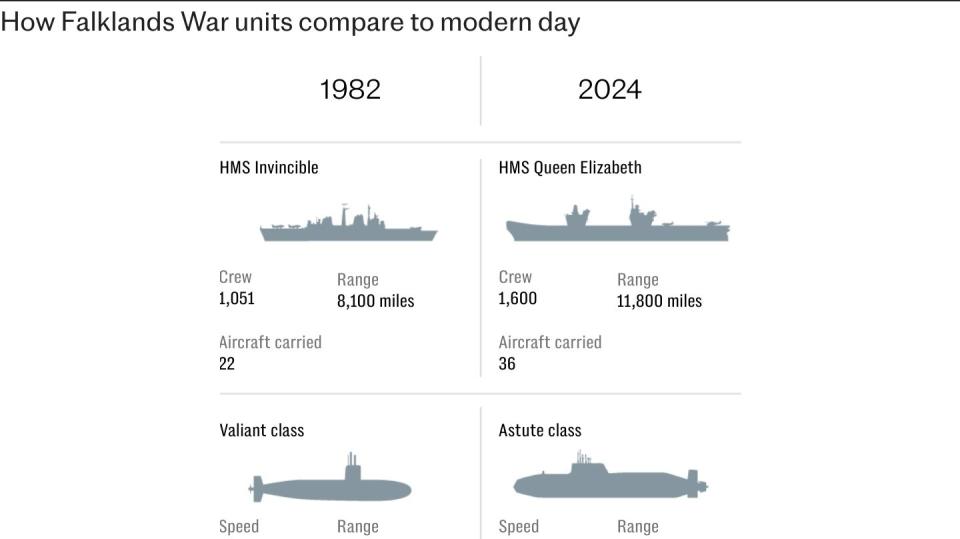
An effort – even on the modest scale of the 1982 Falklands campaign – would be very expensive and would likely strain the limits of allied friendships as London sought favours and called in past debts. There would be calls to abandon the whole endeavour, before any British boot arrived on the islands.
Sounds dicey, but doable..?
Well, scenarios of future wars thousands of miles from home, with little to no allied support, look very different to the 1982 Falklands campaign.
First, intelligence capabilities today would likely give much more warning of a conventional build-up by enemy forces, as demonstrated by the West ahead of Russia’s full-scale invasion of Ukraine in February 2022.
Second, the pace of technical innovation on the battlefield means smaller forces are much more connected, capable and lethal than ever before.
Third, the ranges and accuracy of modern weapons dwarf anything available to the task force in 1982. The war may be won or lost without any fighting taking place on land, a lesson China will be studying as it looks across the Taiwan Strait.
A Royal Navy source told The Telegraph a major lesson from the Falklands War was the need to extend the range of airborne early-warning and air-combat capabilities. The capability of the British fleet was found wanting in this regard in 1982, with remedial investment made in the years following the conflict.
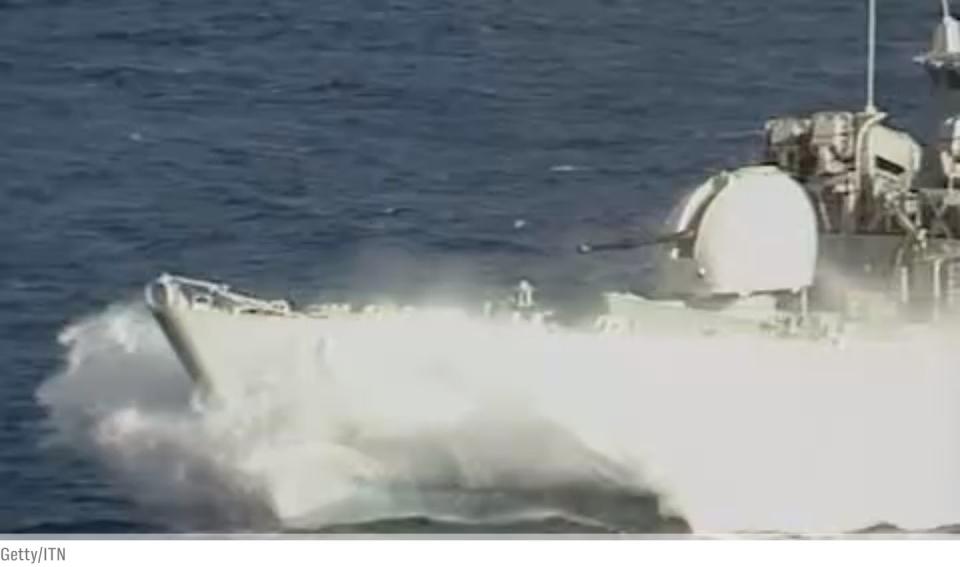
Today, the sensors and systems on an F-35 stealth jet easily overmatch all but the most modern aircraft. There is “literally no comparison in terms of the air-to-air battle,” the source said.
“A couple of F-35s would have the situation sewn up long before a 3rd or even 4th-generation fighter knew they were there.
“The F-35’s ability to hoover up information is mind-blowing. It can create a picture of the battlespace that is light years ahead of what they had in 1982.
“During the Falklands War, the British Harrier jets were broadly similar in capabilities to the Argentine Pucará and Super Etendards. Now, with the F-35, it would be like putting a schoolboy in the ring with Mike Tyson”.
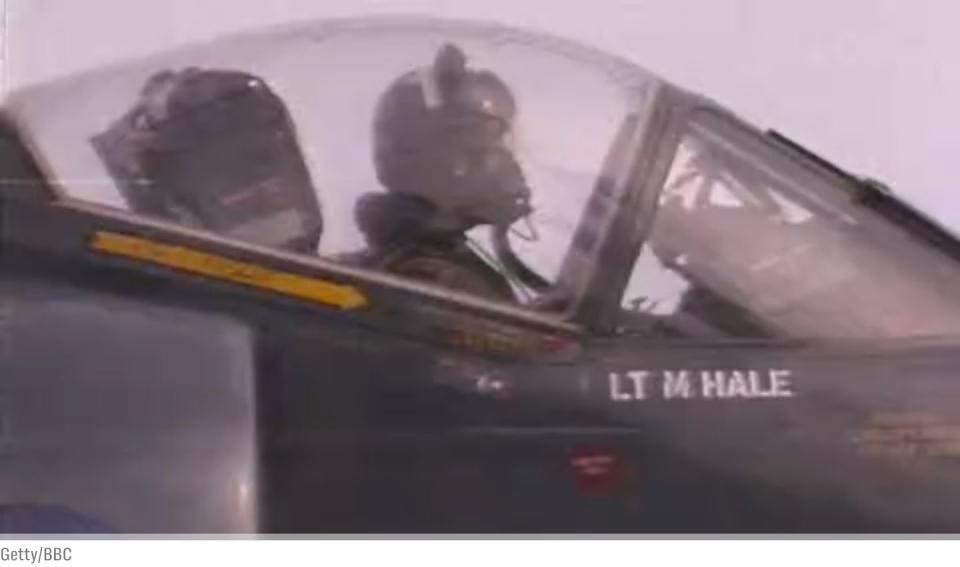
But perhaps above all, there’s the issue of resolve. The overriding factor is that wars are fought on the battlefield but won, or lost, in the mind.
Just getting British forces to any future fight would be problematic, costly and would take valuable and vulnerable time.
Would British political leaders accept the loss of one of the Royal Navy’s two new aircraft carriers? At £3 billion each, plus the cost of the F-35 stealth jets on board, any loss could sink the MoD.
Without the means to secure the entire route of sea and air sustainment, where would the MoD accept gaps?
Ultimately, as lethal as the army is when in the face of the enemy, there are more questions than answers when considering whether Britain’s Armed Forces are big enough and configured correctly for any kind of prolonged action outside Europe – imagined reruns of the Falklands campaign included.
